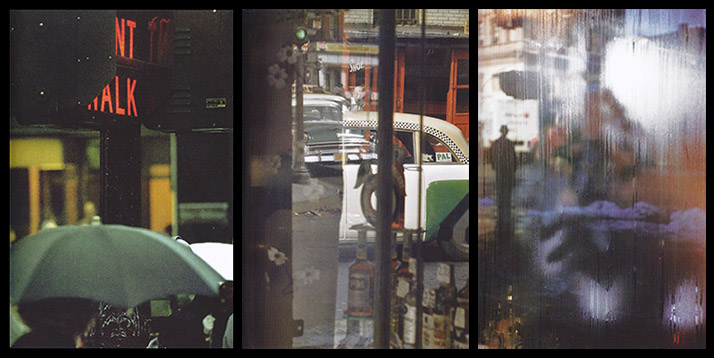Saul Leiter: Color, reflections, and transparency
This second article on color photographers looks at the work of Saul Leiter. His color urban landscape work in New York in the 1950s is truly remarkable for its composition and for his early use of color at a time when black-and-white was considered the only medium for artistic photography.
Leiter was born in December 1923 in Pittsburgh, Pennsylvania. Leiter’s father was a Talmudic scholar, and he also studied to become a rabbi. Unhappy in Pittsburgh, he moved to New York to become an artist. Initially focused on painting, he became drawn to photography. Edward Steichen included some of Leiter’s early black-and-white photographs in an exhibition titled “Always the Stranger” at the New York Museum of Modern Art. Leiter recalled that his images were just tacked to the walls, and not beautifully framed as images are exhibited now.
Leiter began experimenting in color in 1948. He didn’t see himself as a pioneer of color; instead he recognized that the history of art was a history of color, from the earliest cave drawings. It’s an interesting thought, especially in the context that photography emerged in black-and-white due to technical limitations rather than by artistic design.
Saul Leiter didn’t seek to sell popular, third-rate photographs, but rather set his own agenda for his work. As a result, his urban landscape work of New York is unique in its composition. It’s unique in the way the images are framed and especially in techniques of photographing images through glass, in which the primary objects are the reflections in the glass, or other conditions (e.g., condensation) create an abstract image.
Images of Saul Leiter’s work, from left to right: “Don’t Walk” (1952); “Taxi” (1956); “Street Scene” (1959)
Images reproduced under “fair use” doctrine.
Leiter became part of a group of photographers (including Diane Arbus) known as the New York School. Working on his own terms, fame didn’t come to Leiter until he was in his 80s. He was an admirer of the paintings of Pierre Bonnard, who I believe is often under-valued in the art world (and certainly was during his lifetime). Like Bonnard, Leiter’s work has a wonderful style and a wonderful sense of color and abstraction. Saul Leiter died in November 2013 at the age of 89.
Sources:
- Postscript: Saul Leiter (1923-2013), The New Yorker, November 28, 2013
- Biography: Saul Leiter. Gallery51
- Saul Leiter: The anti-celebrity photographer, The Telegraph, February 4, 2014
- “Saul Leiter Photofile”, Thames & Hudson Ltd., 2008, ISBN 978-0-500-41097-4

